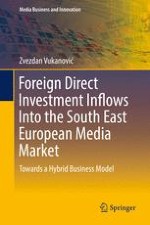2016 | OriginalPaper | Chapter
5. The Conceptual Foundation, Common Motivation, Major Benefits/Disadvantages, and Importance of FDI on Economic Growth and Development
Author : Zvezdan Vukanović
Published in: Foreign Direct Investment Inflows Into the South East European Media Market
Publisher: Springer International Publishing
Activate our intelligent search to find suitable subject content or patents.
Select sections of text to find matching patents with Artificial Intelligence. powered by
Select sections of text to find additional relevant content using AI-assisted search. powered by
